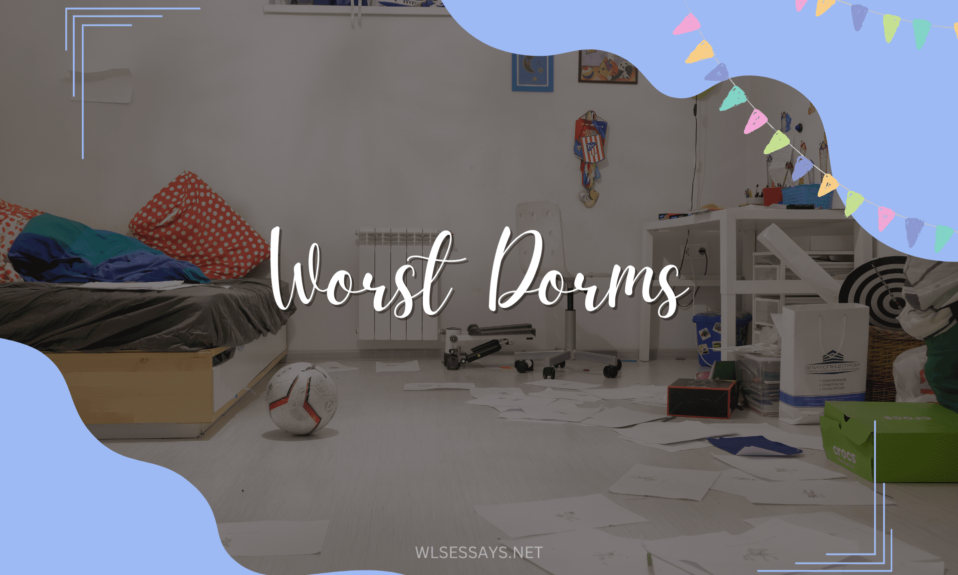Student’s Name
Department, University
Course Code: Course Title
Instructor’s Name
Due Date
Table of Contents
Nursing Working Characteristics 5
Working Conditions Before/During COVID-19 5
Mental Health Effects During/After COVID-19 7
Study Purpose and Research Questions 11
Human Subjects’ Protections 16
Competencies to be Addressed and Leadership Implications 16
Project Abstract
The COVID-19 pandemic placed unprecedented demand on the health sector. The pandemic caused general stress due to the fear of infection and stringent public health measures impacting social interaction, studies, and work, leading to stress and mental health concerns. The impact was more pronounced for healthcare staff because of staff shortages, long working shifts, rapidly changing guidelines, risk of infection, and the lack of adequate training and psychosocial support, leading to higher stress, depression, and anxiety levels than the general public. The study aims to investigate the relationship between psychosocial working conditions and nurses’ burnout, stress, and depression/anxiety at US hospitals and nursing homes during the COVID-19 pandemic. The study is significant in identifying modifiable factors in psychosocial working conditions in healthcare and in informing policy changes to improve the health and wellbeing of nurses and other medical staff. The study adopts the quantitative methods of gathering data using a survey research design from nurses who worked in hospitals and nursing homes during the COVID-19 pandemic. The study seeks to achieve the following competencies: know how to select appropriate interventional, observational, or qualitative study designs to address specific health services research questions, know how to collect primary health and health care data obtained by survey, qualitative, or mixed methods, and know how to assemble secondary data from existing public and private sources. The anticipated public health implications are to improve subpar work environments by informing administrative decision-making about how to structure and operate complex organizations in high-stress settings.
Literature Review
Literature Methods
The process of searching and appraising pertinent studies on working conditions in the health sector and implications on the physical and mental health of nurses and other healthcare staff was guided by the Strengthening the Reporting of Observational Studies (STROBE) Statement Guideline in Nursing Studies (STROBE) (Alkhaqani, 2022). A systematic search for relevant studies was carried out in two online databases – PubMed, Web of Science, EMBASE, and SCOPUS using a search strategy used the following terms and phrases “Working Condition,” “COVID-19”, “SAR-COV-2”, “severe acute respiratory syndrome coronavirus 2”, “Burnout,” “Stress,” “Anxiety,” “Depression,” “Healthcare Staff”, “Nurses” combined with Boolean operators AND and OR. Additional articles were searched from reference list of systematic reviews and included studies were performed to identify other studies that were missing in the web-based search.
The eligibility criteria for selectin pertinent studies on working conditions and mental health effect are primary studies that (1) evaluated working conditions in health facilities; (2) reported data on the impact on healthcare staff stress, burnout, or mental health issues; (3) carried out during COVID-19 pandemic; and (4) included healthcare staff as participants. Studies were excluded if published in a language other than English and in or before 2018 because they could not theoretically directly relate to SARS-CoV-2 or COVID-19, in which the initial diagnosis was made in December 2019. The search for the studies began with title, abstract and finally full paper screened against the inclusion criteria. The search and screening process yielded 18 studies included in the literature review.
Nursing Working Characteristics
Nursing is an essential and central profession in the healthcare industry because it is present in all organizational units of the health system. The characteristics of work in the health sector impose heavy physical and mental demands on nurses due to chronic exposure to psychosocial factors such as long hours, intense demand, high pace, and low autonomy (Misiak et al., 2020). Psychosocial factors at work can contribute to the development of work-related stress – a reaction of the human body in a situation when an individual is exposed to work-related demands and pressures that are not adapted to one’s knowledge and skills and that pose a change from the viewpoint of one’s ability to cope (Leka & Jain, 2010). Nurses are expose repeatedly and continuously to adverse psychosocial work conditions resulting into job related stress and burnout. The World Health Organization (WHO: 2019) defines burnout as “a syndrome conceptualized as resulting from chronic workplace stress that has not been successfully managed characterized by feelings of energy depletion or exhaustion, increased mental distance from one’s job, or feelings of negativism or cynicism related to one’s job; and reduced professional. Nursing also involves close and intense contact with other people and a commitment to work and care for their wellbeing, which places great mental and physical demands on the nurse.
Working Conditions Before/During COVID-19
A cross-sectional descriptive study of registered nurses (RN, N = 33,462) working conditions before the COVID-19 pandemic suggests those in hospitals faced psychosocial issues when executing their responsibilities (French et al., 2022). More than 40% reported high burnout, 25% were dissatisfied with their jobs, and 20% entertained the intention to leave their employer within 12 months, which was higher in Nursing homes, where a third intended to leave (33%). The main work-related psychosocial concerns for nurses in the working environment were inadequate staffing (56%), uncaring administrators (42%), assigned non-nursing tasks (82%), influencing most nurses (68%) to rate care quality as less than excellent and less than a half (41%) rated patient safety as unfavorable.
Aiken’s et al. (2023) cross-sectional study of RNs before and during the pandemic in New York and Illinois (N = 151,335 RNs); the lack of confidence in hospital management to address nursing concerns worsened from pre-pandemic (69%) to during the pandemic (78%). RNs’ perception of management actions failing to prioritize patient safety also increased between pre- and post-pandemic (48% to 53%). RNs’ patient safety ratings rose from 45% to 47%, infection prevention from 33% to 37%, and overall quality of care from 20% to 26%. However, despite RNs’ perception of deteriorating working conditions pre- and during the pandemic period, employment in hospitals and healthcare facilities other than hospitals (43.9% vs. 43.7% and 32.5% and 32.6%) indicating an insignificant number of RNs left the profession during the pandemic relative to before COVID-19.
The COVID-19 epidemic significantly impacted working conditions in the health sector. A sudden and significant increase in the number of critical care patients presenting in healthcare facilities far outstripped the number of healthcare staff, coupled with increased demand-supply mismatch for personal protective equipment (PPE) to prevent nosocomial infection resulted in increased stress levels and occupational burnout. Nurses rejected the government and media narrative of assigning healthcare staff a hero status because it shifts responsibility from politicians to hospitals and individual heroic act of healthcare workers leading to characteristics of being invincible and self-sacrificing, knowingly and willingly working in risk (Halberg, Jensen & Larsen, 2021). In contrast, healthcare personnel at the forefront of the COVID-19 pandemic have had difficulty providing adequate care for COVID-19 patients. Healthcare workers must successfully treat patients with COVID and also tend to their duties, such as family and self-care (Smith et al., 2021a).
Ardebili et al. (2021) Nurses conducted a qualitative study on healthcare providers’ experience working during the COVID-19 pandemic and conducted semi-structured interviews with 97 healthcare professionals. They conducted a thematic analysis to examine the data. Participants were health care professionals, including nurses from different cadres. The study finds that nurses underwent a three-stage progressive change in mental health: (1) early exposure marked with fear, anxiety, and a sense of hopelessness and helplessness; (2) crisis peak characterized by a sense of providing futile care leading to frustrations and physically and emotionally exhaustion, and depression; and (3) long-term effects, marked with persistent fear of getting infected, symptoms of post-traumatic stress disorder (PSTD), feeling sad and reactivation of earlier fears as patient numbers resurge.
Mental Health Effects During/After COVID-19
The work of nurses and other health professionals significantly impacts care delivery, quality, and efficient use of health services resources. Their roles become more essential during the current COVID-19 global epidemic, in which nurses, nurse practitioners, and other public and private health professionals provide and manage COVID-19 care, testing, triage, governance, vaccination, and impending medical issues. (Johnson et al., 2021). By the end of 2020, the total number of deaths attributed to COVID-19 in the US was 2,262, which ranked as the third leading cause of death for children and adults (697.5 deaths/million), behind heart disease (1287.7 deaths/million) and cancer (1219.8 deaths/million) (Koh, Geller & VanderWeele, 2021).
During the pandemic, medical staff were the main force managing the disease and a more significant burden and prone to physical and mental health problems compared to the general public. Wang et al. (2020) COVID-19 study conducted early phase of the pandemic in China reported levels of depression (30%) and anxiety (37%) in the general public. The levels were lower compared to a similar study conducted at the same time, reporting 50% and 45%, respectively, of medical staff reported depression and anxiety (Lai et al., 2020). Although the disease, fear of infection, and stringent public health measures such as isolation, quarantine, social distancing, and lockdowns impacted people’s social interaction, studies, and work, leading to stress and mental health concerns, medical staff faced more intensive precipitating factors. They experienced additional unique challenges such as staff shortages, long working shifts, prolonged wearing of PPEs, an insufficient supply of PPEs, rapidly changing guidelines, the risk of infection spreading to family and friends, and the lack of adequate training and psychosocial support, leading to higher stress, depression, and anxiety levels than the general public (Chew et al., 2020). Studies during the pandemic suggest medical staff, including nurses, had higher stress, anxiety, and depression levels compared to the general public due to exposure to general and work-specific antecedents to mental health issues.
Further, among medical staff, frontline workers such as physicians, nurses, pharmacists, lab technologists, and occupational and physical therapists reported higher levels of stress than non-frontline staff like administrators and managers, medical coders and billers, and medical information technologists. In a systematic review of 250 studies with a sample of 292 230 participants from 46 countries, Zhu et al. (2023) reported pooled prevalence of burnout at 43.6% with no significant differences between doctors, nurses and other medical staff, or frontline and non-frontline medical staff. The pooled prevalence of anxiety was 37.1%, with significant differences between males and females (41.1%), male staff (32.1%), frontline medical staff (41.4%), and non-frontline medical staff (27.6%). The pooled prevalence of depression was 37.6%, with a higher prevalence between frontline medical staff and non-frontline medical staff ((41.8% vs. 30.7%). The findings also indicated that stress was 41.3%, with no significant differences between doctors, nurses, and other medical staff; however, frontline workers had higher levels pf stress (47.0%) than non-frontline staff (31.4%).
Serrano-Ripoll et al. (2020) performed a meta-analysis (N = 113 studies) examining the prevalence of stress, burnout, anxiety, and depression among fronting medical staff pre- and post-pandemics, and reported higher prevalence for stress disorder (40%) and anxiety (30%), and lower prevalence for burnout (28%), depression (24%). A deeper analysis of reveals depression and anxiety after pandemics (46% and 30%) were significantly higher (24% and 30%) than during the pandemic. Additional analysis showed female staff had higher levels of stress (26%) and compared to male counterparts (21%) depression had no sex-related differences because both females and males reported accounted for 23% depression.
Gaps in the Literature
Psychosocial working conditions negatively impact clinicians’ health and their ability to provide patient care affecting job performance, attrition rates, and patient outcomes (Sun et al., 2022; Saragih et al., 2021). Empirical evidence from nursing research in hospitals and nursing homes before the COVID-19 pandemic reveals that RNs perceive poor work conditions include close supervision (limited autonomy), hospital leadership that does not facilitate or support them, poor working relationship with other medical staff, which may result into work-relayed stress, burnout, disengagement, and desire to quit the profession, and ultimately reduced patient safety and outcomes. After the onset of COVID-19, nurses psychosocial conditions worsened because of demand exceeded available nursing resources, worked for longer hours including deep into the night, operational guidelines were also changing as evidence on managing the condition was changing rapidly, and the fear of infection family and friends, all increase physical and mental burden (Chew et al., 2020). The reviewed literature examined general working conditions in healthcare organizations during the COVID-19 pandemic. However, previous studies only indicate the prevalence of mental health condition pre- and during COVID-19 pandemic, and the present studies extends current knowledge by exploring the impact of CPVID-19 effects on psychosocial working conditions in hospitals and nursing homes and their association with nurse burnout, anxiety, and depression.
Conceptual Model
Figure 1: Conceptual Model
Hypothesis
H1: Poor psychosocial working conditions negatively and significantly impact job burnout.
H2: Job burnout has a negative and significant impact on job performance.
H3: Depression mediates the impact of job burnout and job performance.
H4: Anxiety mediates the impact of job burnout and job performance.
Study Purpose and Research Questions
The COVID-19 pandemic led to a sudden and substantial increase in the demand for emergency healthcare, leading to staff inadequacy, heightened fears of nosocomial infections, changing guidelines, and a sense of hopelessness about current treatment to prevent COVID-19 deaths. Similarly, the present study explores how pandemics or situations that significantly increase healthier demand can affect nurses’ health and well-being and their ability to provide safe and effective care. Therefore, this study aims to investigate the relationship between psychosocial working conditions and nurses’ burnout, stress, and depression/anxiety at US hospitals and nursing homes during the COVID-19 pandemic.
The present study seeks to answer the following four research questions in pursuit of the research aims.
- How have the psychosocial working conditions of healthcare workers contributed to burnout during the outbreak and spread of the COVID-19 pandemic? Have they worsened since before the pandemic?
- What is the prevalence of anxiety and depression among nurses during the pandemic? Has it increased since before the pandemic?
- Did worsening psychosocial working conditions during the pandemic contribute to increases in anxiety and depression among nurses?
- What are nurses doing to improve their psychosocial working conditions and mental health wellbeing?
Significance of the Study
This study investigating workplace health and safety conditions at US healthcare facilities during the COVID-19 pandemic and their association with burnout, stress, depression/anxiety is significant in providing valuable insights into developing practical interventions for protecting healthcare staff, enhancing patient care, and strengthening the resilience of healthcare systems. This research can reveal how a sudden rise in demand for healthcare services impacts working conditions in the health sector and nurse health and wellbeing. The present findings identify modifiable psychosocial factors in the workplace that lead to high-stress levels and burnout, which can inform healthcare facilities to implement targeted interventions to enhance nurse health and wellbeing.
Burnout, stress and ill-health negatively impact care quality and patient outcomes. Research describing the relationship between workplace conditions and nurse wellbeing can guide healthcare organizations to develop strategies to improve the work environment and deliver safe and effective patient care. The findings can also inform policy formulation on strategies and best practices for promoting workplace health and safety in the health sector. The study highlights lessons learned from how governments and healthcare facilities dealt with the COVID-19 pandemic can provide insights into how healthcare facilities can build resilience and preparedness for future public health crises and contribute to the development of evidence-based interventions to protect the health and well-being of nurses and other healthcare staff and ensure the sustainability of healthcare systems in the face of future challenges.
Methods
Research Method
This study adopts the quantitative research method to investigate the relationship between psychosocial working conditions during COVID-19, stress and nurse burnout, and mental health (anxiety and depression) which is appropriate because it reduces observations into quantifiable units (variables), defines their relationship, and generalizes the findings to a broader population (Smith & Hasan, 2020). The present study uses the quantitative design to quantify psychosocial working conditions and determine their relationship and generalize the findings to a broader similar population. This study also adopts a cross-sectional survey research design using surbey questionnaire to collect data about working conditions and mental health of nurses from a cross section of participants to improve the generalizability of findings.
Population and Sampling
The study population are nurses who were working during the COVID-19 pandemic and experiencing high demand for healthcare dealing with people infected with a highly infectious and life-threatening virus amid limited financial, human and medical resources. However, to ensure the manageability and practicability of the study based on available time- and resource, the researcher delimited the study to nurses working in hospitals and nursing homes within the State of New York, and selected Memorial Sloan Kettering (MSK) Koch Location and Massapequa Center, NY, nursing home. New Yor City was an appropriate location because it witnessed one of the highest infectivity and mortality rates associated with COVID-19 nationally exposing the two health facilities to unprecedented demand for primary and intensive treatment. The two centers have a population of 1,300 and 369 medical and non-medical staff, which presents a sufficient sample of nurses to support analysis.
An official email will be sent to the two selected healthcare facilities, inviting them to participate in the research, which documented the purpose and objectives of the study and the significance of the research in improving the working conditions and the health and well-being of workers. Upon consenting to the research, the researcher will invite nursing staff to participate through posters in place on strategic locations in the two selected healthcare facilities and through the organizational social media accounts like Facebook and Instagram. The principal investigator will provide an email address so those interested and willing to participate in the study can respond affirmatively, and a simple random sampling method used to select a subset of the population to participate. Selection will be done by assigning all willing nurses a unique alphanumeric number and then running a random number generator computer program to select the nurses who will participate in the survey. Random sampling is ideal since it gives every nurse an equal chance to participate to achieve a representative sample that reflects the demographic characteristics of the study population, and improve generalizability of findings.
Research Instrumentation
This study will employ existing validated scales to gather data. The main variables are (1) psychosocial working conditions; (2) burnout; (3) anxiety; and (4) depression, and their measurement scales are summarized in Table I
Table 1: Research Instruments and Reliability Scores
| Variable | Scale | Items | Reliability (Cronbach Alpha) |
| Psychosocial working conditions | Psychosocial Working Conditions Questionnaire (PWCQ) (Karasek, 1990) | Job Demands, Job Control, Social Support | 0.82 to 0.94 |
| Burnout | Burnout Inventory (Ninaus, Diehl & Terlutter, 2021) | Three items | 0.773 |
| Depression, anxiety, and stress | Depression, anxiety, and Stress Scale (DASS) (Vignola & Tucci, 2014). | Depression, anxiety, and stress | 0.896, 0.902 & 0.897, respectively. |
| Employee performance | Job Performance (Ferozi & Chang, 2021) | 16-item scale | 0.945 |
Psychosocial working conditions will be measured by the Psychosocial Working Conditions Questionnaire (PWCQ) based on Karasek’s (1990) model of job stress containing three main sub-scales – job demands, job control, and social support, rated using a 5-point Likert scale, which show high internal consistency, as shown by Cronbach values between 0.82 and 0.94. Depression, anxiety, and stress were measured using a 7-item Likert scale adopted from Vignola & Tucci, 2014), which are reliable based on Cronbach alpha values of 0.896, 0.902, and 0.897, respectively. Job burnout was measured using a 3-item scale adopted from Ninaus, Diehl & Terlutter (2021), which has a high internal consistency (Cronbach Alpha = 0.773). Finally, nurse performance was measured by a 16-item scale adopted by Ferozi and Chang (2021), with a Cronbach alpha of 0.945, indicating solid reliability (Ferozi & Chang, 2021).
Data Analysis Plan
Data will be analyzed using the SPSS and AMOS to establish the relationships between study variables and test the conceptual model. Mean, standard deviation, frequency, and percentage analysis will examine the demographic distribution of respondents to show how representative the sample is to the broader nursing population. Confirmatory factor analysis will evaluate the internal validity of the conceptual model, and structural equation modeling (SEM) will be used to analyze multivariate and causal associations between study variables and test study hypotheses. Finally, findings will be presented using tables and graphs to simplify understanding and interpretation of data.
Partnerships
I am planning to get government partnerships or public health organizations to facilitate the project’s planning and execution.
Human Subjects Protections
Research ethics are processes or requirements in research involving people to uphold their rights and prevent any harm to them due to their participation in a study. Before sampling and administering survey questionnaires, this study will seek IRB approval at SUNY Downstate Health Sciences University. Since this research includes human subjects, and as part of the IRB requirement, the principal investigator is currently undergoing training on the responsible conduct of research, and after completion, submit certification of training to the dissertation committee chair before a dissertation proposal presentation is scheduled. The study will ensure it upholds all research ethics – informed consent indicating voluntary participation, participant anonymity by assigning them unique alphanumeric identifiers in place of actual names, withdrawal from the study without any consequences, the confidentiality of responses by storing responses in a secured folder and using data solely to achieve the study objectives, and destroyed after successful completion and graduation from the course.
Competencies to be Addressed and Leadership Implications
This dissertation process integrates and applies at least three foundational and concentration-specific doctoral competencies – know how to select appropriate interventional, observational, or qualitative study designs to address specific health services research questions, know how to collect primary health and health care data obtained by survey, qualitative, or mixed methods, and know how to assemble secondary data from existing public and private sources. The competencies will improve the ability to identify research and develop or use evidence-based interventions to resolve healthcare issues.
Timelines
| Task Number | Task Name/Label | Progress | Start | End |
| Task 1 | Draft Proposal | 30% | 5/8/24 | 5/18/24 |
| Task 2 | Study Design | 0% | 5/18/24 | 6/7/24 |
| Task 3 | Data Collection | 0% | 6/7/24 | 7/7/24 |
| Task 4 | Literature review | 0% | 7/7/24 | 8/16/24 |
| Task 5 | Draft Proposal Defense | 0% | 8/16/24 | 8/18/24 |
| Task 6 | Analyze data | 0% | 8/18/24 | 9/17/24 |
| Task 7 | Draft two papers | 0% | 9/17/24 | 10/7/24 |
| Task 8 | Draft Dissertation | 0% | 10/7/24 | 10/22/24 |
| Task 9 | Defend Dissertation | 0% | 10/22/24 | 11/21/24 |
References
Aiken, L. H., Sloane, D. M., McHugh, M. D., Pogue, C. A., & Lasater, K. B. (2023). A repeated cross-sectional study of nurses immediately before and during the COVID-19 pandemic: implications for action. Nursing Outlook, 71(1), 101903. https://doi.org/10.1016/j.outlook.2022.11.007
Alkhaqani, A. L. (2022). Application of Strengthening the Reporting of Observational Studies (STROBE) Statement Guideline in Nursing Studies: Analytical Review. Al-Rafidain Journal of Medical Sciences 2, 93-100. https://doi.org/10.54133/ajms.v2i.66
Ardebili, M. E., Naserbakht, M., Bernstein, C., Alazmani-Noodeh, F., Hakimi, H., & Ranjbar, H. (2021). Healthcare provider’s experience of working during the COVID-19 pandemic: a qualitative study. American Journal of Infection Control, 49(5), 547-554. https://doi.org/10.1016/j.ajic.2020.10.001
Chew, N. W., Lee, G. K., Tan, B. Y., Jing, M., Goh, Y., Ngiam, N. J., … & Sharma, V. K. (2020). A multinational, multicentre study on the psychological outcomes and associated physical symptoms amongst healthcare workers during the COVID-19 outbreak. Brain, behavior, and immunity, 88, 559-565.
Ferozi, S., & Chang, Y. (2021). Transformational leadership and its impact on employee performance: focus on public employees in Afghanistan. Transylvanian review of administrative sciences, 17(63), 49-68. http://dx.doi.org/10.24193/tras.63E.3
French, R., Aiken, L. H., Rosenbaum, K. E. F., & Lasater, K. B. (2022). Conditions of nursing practice in hospitals and nursing homes before COVID-19: Implications for policy action. Journal of Nursing Regulation, 13(1), 45-53. https://doi.org/10.1016/S2155-8256(22)00033-3
Halberg, N., Jensen, P. S., & Larsen, T. S. (2021). We are not heroes—The flip side of the hero narrative amidst the COVID-19 pandemic: A Danish hospital ethnography. Journal of Advanced Nursing, 77(5), 2429-2436. https://doi.org/10.1111/jan.14811
Karasek, R. (1990). Stress, productivity, and the reconstruction of working life. Health work.
Koh, H. K., Geller, A. C., & VanderWeele, T. J. (2021). Deaths from COVID-19. Jama, 325(2), 133-134. https://doi.org/10.1001/jama.2020.25381
Lai, J., Ma, S., Wang, Y., Cai, Z., Hu, J., Wei, N., … & Hu, S. (2020). Factors associated with mental health outcomes among health care workers exposed to coronavirus disease 2019. JAMA Network Open, 3(3), e203976-e203976. https://doi.org/10.1001/jamanetworkopen.2020.3976
Leka, S., & Jain, A. (2010). Health Impact of Psychosocial Hazards at Work: An Overview; World Health Organization: Geneva, Switzerland.
Misiak, B., Sierżantowicz, R., Krajewska-Kułak, E., Lewko, K., Chilińska, J., & Lewko, J. (2020). Psychosocial work-related hazards and their relationship to the quality of life of nurses—A cross-sectional study. International Journal of Environmental Research and Public Health, 17(3), 755. https://doi.org/10.3390/ijerph17030755
Ninaus, K., Diehl, S., & Terlutter, R. (2021). Employee perceptions of information and communication technologies in work life, perceived burnout, job satisfaction and the role of work-family balance. Journal of Business Research, 136, 652-666. https://doi.org/10.1016/j.jbusres.2021.08.007
Saragih, I. D., Tonapa, S. I., Saragih, I. S., Advani, S., Batubara, S. O., Suarilah, I., & Lin, C. J. (2021). Global prevalence of mental health problems among healthcare workers during the Covid-19 pandemic: a systematic review and meta-analysis. International Journal of Nursing Studies, 121, 104002. https://doi.org/10.1016/j.ijnurstu.2021.104002
Serrano-Ripoll, M. J., Meneses-Echavez, J. F., Ricci-Cabello, I., Fraile-Navarro, D., Fiol-deRoque, M. A., Pastor-Moreno, G., … & Gonçalves-Bradley, D. C. (2020). Impact of viral epidemic outbreaks on healthcare workers’ mental health: a rapid systematic review and meta-analysis. Journal of Affective Disorders, 277, 347-357. https://doi.org/10.1016/j.jad.2020.08.034
Smith, J. D., & Hasan, M. (2020). Quantitative approaches for the evaluation of implementation research studies. Psychiatry Research, 283, 112521. https://doi.org/10.1016/j.psychres.2019.112521
Smith, P. M., Oudyk, J., Potter, G., & Mustard, C. (2021a). The Association between the Perceived Adequacy of Workplace Infection Control Procedures and Personal Protective Equipment with Mental Health Symptoms: A Cross-sectional Survey of Canadian Health-care Workers during the COVID-19 Pandemic. The Canadian Journal of Psychiatry, 66(1), 17-24. https://journals.sagepub.com/doi/full/10.1177/0706743720961729
Sun, J., Sarfraz, M., Ivascu, L., Iqbal, K., & Mansoor, A. (2022). How did work-related depression, anxiety, and stress hamper healthcare employee performance during COVID-19? The mediating role of job burnout and mental health. International Journal of Environmental Research and Public Health, 19(16), 10359. https://doi.org/10.3390/ijerph191610359
Vignola, R. C. B., & Tucci, A. M. (2014). Adaptation and validation of the depression, anxiety, and stress scale (DASS) to Brazilian Portuguese. Journal of Affective Disorders, 155, 104-109. https://doi.org/10.1016/j.jad.2013.10.031
Wang, C., Pan, R., Wan, X., Tan, Y., Xu, L., Ho, C. S., & Ho, R. C. (2020). Immediate psychological responses and associated factors during the initial stage of the 2019 coronavirus disease (COVID-19) epidemic among the general population in China. International Journal of Environmental Research and Public Health, 17(5), 1729. https://doi.org/10.3390/ijerph17051729
Word Health Organization. (2019, May 18). Burnout an “occupational phenomenon”: International Classification of Diseases. https://www.who.int/news/item/28-05-2019-burn-out-an-occupational-phenomenon-international-classification-of-diseases
Zhu, H., Yang, X., Xie, S., & Zhou, J. (2023). Prevalence of burnout and mental health problems among medical staff during the COVID-19 pandemic: a systematic review and meta-analysis. BMJ Open, 13(7), e061945. https://doi.org/10.1136/bmjopen-2022-061945.










